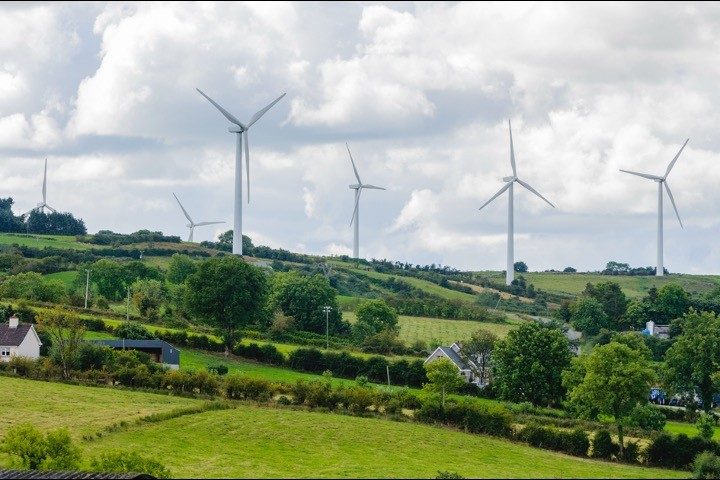
Ireland’s growing electricity demand and the planned shutting down of aging gas-fired power stations have led to the need for backup generators to help keep the lights on across the Emerald Isle for at least the next few winters.
The Telegraph reported that “mobile turbines, described as ‘effectively jet engines’, are set to be installed in areas including Dublin and nearby County Meath.” The generators were ordered by Environment Minister Eamon Ryan last year as a “last resort” due to the expected energy shortfall.
That energy shortfall intensified as the war in Ukraine led to fuel supply issues, and as domestic fossil-fuel energy generation is being sunset to achieve clean-energy goals, the island has become more reliant on gas imports.
In October, Minister of State Ossian Smyth called the situation “an electricity emergency,” while Darren O’Rourke, an Assembly delegate, called it “a national scandal.”
O’Rourke is right, as government-instituted and -enforced climate-change policies are scandalous, designed to bring us all under one-government rule, as outlined in the United Nations Agenda 2030.
The Irish Government (Republic of Ireland) launched its Climate Action Plan in 2021, taking “decisive action” by seeking a 51-percent reduction of overall greenhouse gas (GHG) emissions by 2030, with the goal of reaching net-zero emissions by no later than 2050 in accordance with the Climate Change Act. The plan set a target that up to 80 percent of electricity will come from renewable energy sources by 2030.
Northern Ireland’s electricity grid falls under the purview of the United Kingdom’s (U.K.) Climate Change Committee (CCC), which advises and reports to U.K.’s Parliament on progress made in GHG emissions to help prepare for the supposed impacts of climate change. Their goals are legally binding, with targets to reach net-zero emissions by 2050 covering all sectors of the country’s economy.
EirGrid Group provides and operates the national electricity grid for the whole island of Ireland. In 2021 they published a comprehensive All-Island Ten-Year Transmission Forecast Statement presenting multiple solutions for the electricity transmission system to reach set goals by 2030.
In an October press release, EirGrid announced their annual electric Generation Capacity Statement (GCS) that predicts a “challenging outlook for Ireland, with capacity deficits identified during the 10 years to 2031.” The statement shared that power capacity deficits will increase due to the deteriorating availability of power plants in the short term, but slowly reduce in later years as “new capacity comes forward through the Single Electricity Market (SEM) capacity auctions.”
“Since 2016, the GCS has warned of an increasing tightness between demand and supply. This year’s GCS forecasts significant electricity supply issues over the coming years with an increase in the tightness between supply and demand,” said Mark Foley, EirGrid’s chief executive officer.
Indicating that the present power grid is being pushed to its limits, there were eight “system alerts” reported between January 2020 and September 2021. Add in the increased demand for electricity with more electric cars and heat pumps, the shutting down of old gas-powered energy plants, and wind power’s unpredictable output, and you end up with a man-made electricity emergency.
The GCS median forecast estimates that demand for electricity will increase 37 percent by 2031, leading to more uncertainty of Ireland’s energy needs being met. The report also exposes the desperate need to replace and build new infrastructure.
In conclusion, the GCS report stated: “The island will require coordinated management of both the volume and type of new capacity, alongside new ways of managing increasing demand to ensure security of supply. To prepare for this change, EirGrid must make the electricity grid stronger and more flexible. Given the scale of change, there is a need to plan for a great deal of new grid infrastructure.”
In a nutshell, Ireland meeting the goals of their Climate Action Plan is impossible, as it will take decades at best to build the infrastructure needed to supply the needs of a net-zero-emissions island. What they should do is drop the Climate Action Plan and allow the free market to develop new clean energy sources, utilizing existing gas-powered plants to fuel the island’s energy needs in the meantime.




